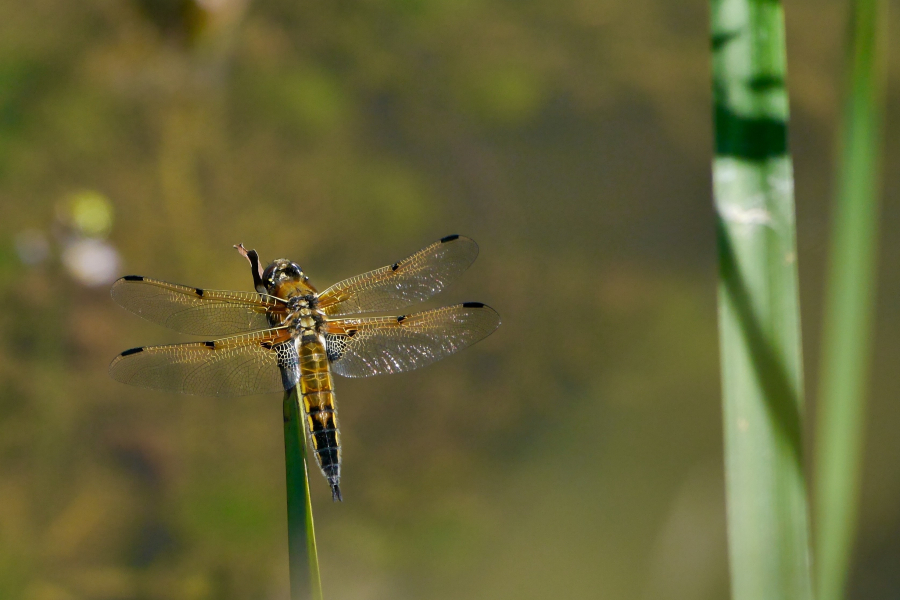by David Chandler
Spend time near a river, pond, lake or ditch when it’s warm and sunny and you may well see a dragonfly. ‘Dragonfly’ can refer to damselflies as well as the true dragonflies, and with just a little bit of practice, it’s easy to tell the difference. The true dragons have stouter bodies than the matchstick-like damsels and are strong, powerful fliers. Damselfly flight is weaker and more fluttery. When they settle, true dragons hold their wings out at right angles to the body. With a few exceptions, damsels hold their wings along the length of their body. And those exceptions (the Emerald damselflies) don’t stick their wings out at right angles – it’s more like 30-45⁰. Their eyes are different too. There’s a gap between the eyes of a damselfly. In this country, with one exception which doesn’t occur in the NLOW area, that’s not the case on a true dragon – their eyes touch.
Knowing that it’s a damsel or a true dragon is the first step to working out which species you are looking at. There are 24 species that occur regularly on the NLOW patch, 11 damsels and 13 true dragons. The Four-spotted Chaser is one of the true dragons that you may well encounter. You can see one in the photo. It’s a feisty beast and if you’re wondering, the four spots are the dark spots roughly mid-way along the leading edge of each of the four wings. Those other dark marks are pterostigmata (the singular is pterostigma – it means wing mark) and most dragons and damsels have those. In the UK, no other true dragon has those four spots – so it’s an easy one to identify.
The dragons and damsels that we see flying are the adults and this is a relatively brief part of their life-cycle. Adult damsels live for a couple of weeks perhaps, and true dragons for a couple of months. As adults, most of their life is behind them and beneath them – the larvae are aquatic and typically spend a year or two underwater before taking to the air and brightening our warmer months.
